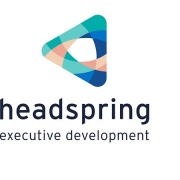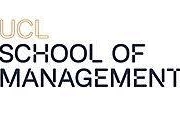The failures of work give us hope for the future
Workplace engagement is approaching an all-time low, and typical employer reaction has been characteristically resigned. Actually, that last statement was inaccurately soft. Let me rephrase: most employees either don’t care about or actually hate their jobs, and employers couldn’t care less.
Gallup recently issued their biennial global engagement survey – the widest and most accurate in the world if the sheer numbers of participants are anything to go by. While overall average engagement decreased slightly to 20 percent, that figure plummets to just 11 percent in Europe. The situation is even worse than it initially sounds. If 11 percent of our local workforce are engaged, then that implies that 89 percent are either disengaged (don’t care about their jobs) or actively disengaged (actually despise their work and/or employers). When I share these results to rooms full of senior executives, the reaction I usually receive is an odd mix of troubled and resigned. In other words, ‘It’s not great but I don’t see what we can do about it.’
Popular press has recently attempted another tactic to bring this engagement crisis to the forefront of corporate consciousness by calling it ‘quiet quitting’. But is that really a new thing? Or are we just sticking a new label on an old problem: colleagues doing the bare minimum, just trying to hang on and draw their pay cheque and keep their noses down? Isn’t that what a lot of people have been doing for decades? The difference now is that employers are experiencing the pain of high rates of ‘real quitting’ with some figures indicating that at least half of all employees in the West are considering resigning in the next year.
Employers are experiencing the pain of high rates of ‘real quitting’
If we accept that the cost of replacing an employee is 50-200 percent of their annual salary, then a company of one hundred colleagues with an average salary of £50,000 may face a semi-hidden cost from over a million to as much as five million pounds in the next year in resource gaps, recruiting, possible headhunter fees, training, and knowledge and learning economy losses. For the youngest generation at work, the problem is even worse. In researching my book Next Generation Leadership, I discovered that 90 percent of Generation Y (or Millennials, who compose 65 percent of the global workforce) typically don’t expect to stay with any employer for more than five years, and 37 percent would say not more than two years.
If current employer efforts clearly have not worked, how should we reconsider and refresh engagement? My research identified that true employee engagement is composed of three areas:
One is development, but not necessarily development in the way in which we usually define it, such as courses. We usually give our people development all the time, but managers are often poor at explaining why those are development opportunities explicitly. So those opportunities are ignored or taken for granted. For example, if we give people projects, do we actually tell them that this is a development opportunity and for specific reasons? When they are shadowing, attending international secondments or placements, or receiving mentoring, are we explicit about how and why those are development opportunities? And of course, many of the initiatives I’ve just mentioned are free or inexpensive.
Culture matters
The second engagement lever is culture. What is it like to work around here? What’s the experience? We have to think about culture less as a communications exercise (composing the purpose and values with communications consultants or the investor relations department), and more of a sociological initiative. In other words, what behaviours do we want to observe more of and less of?
The two questions that Generation Y told me that they wish they could ask or would have been asked in a recruitment interview are: Can I meet the team I would be working with, and would you show me where my desk will be? They are interested in the individuals surrounding them and the behaviours they would see from those people. They are interested, therefore, in culture not as an employer value proposition but as a day-to-day experience.
What we’ve learned since Covid is that we should in fact have flexibility in terms of workplace location
The third engagement principle is work-life balance. When employees request work-life balance, they might truly be asking to work fewer hours, but there might be something else behind that request, which is flexibility in terms of where they work. It’s important to diagnose what each colleague wants because there is semantic discord among the generations about their definitions of the term ‘work-life balance’.
For most Gen Xs and Baby Boomers, work-life balance is a ‘when’ question. In other words, when they hear ‘work-life balance’ they would interpret that the speaker wants to work fewer hours, which can lead them to conclude, ‘They don’t want to pay the dues that I paid, and so they’re lazy.’ So it goes, and that contributes to this incorrect prejudice that Gen Ys are somehow indolent.
When I ask Gen Ys what they mean when they say or hear ‘work-life balance’, they generally say that this is a ‘where’ statement. Therefore, what they’re looking for is flexibility in terms of location of work. What they’re rejecting is face-time culture, being chained to your desk, not being able to leave the office until the boss leaves.
Of course, what we’ve learned since Covid is that we should in fact have flexibility in terms of workplace location. And yes, I know that it does vary based on function or industry whether it is possible to work from home or elsewhere, but I would nevertheless suggest that we ask each another before we get into a work-life balance conversation: ‘What do you mean when you say work-life balance in your context,’ in order to make sure that we aren’t speaking at cross-purposes.
The good news about the world of work is that it actually has an awfully good record of reinvention. Over history, how work is organised and incentivised has evolved dramatically from feudalism to mercantilism to industrial capitalism to post-industrial capitalism. With will and focus, we can and must evolve our world of work again to make it fit for the human beings within, to make our work life a life worth living.

Adam Kingl is an educator, keynote speaker and the author of Next Generation Leadership and Sparking Success, due to be released in April 2023













